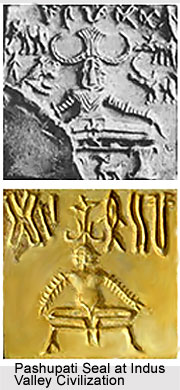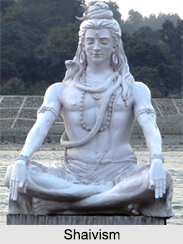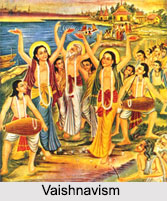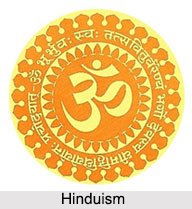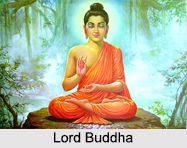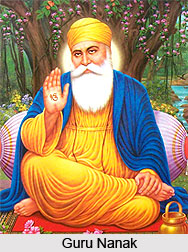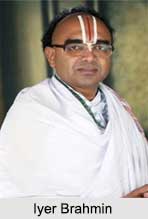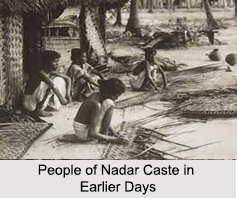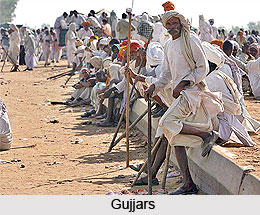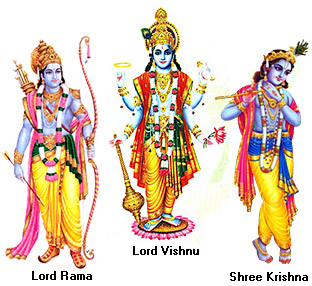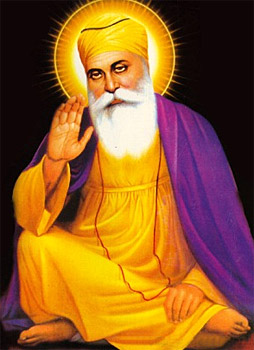 In the 15th century, the birth of Guru Nanak signified the origin of Sikhism and soon it gained popularity and spread in different parts of the country. The biographic details provided by the `Janam Sakhis` disclose that Guru Nanak undertook various long journeys across the country and even beyond its territories which greatly escalated the spread of Sikhism. However, observations reveal that the spread of Sikhism was not merely as a religious doctrine but it also incorporated different modes of social reformation.
In the 15th century, the birth of Guru Nanak signified the origin of Sikhism and soon it gained popularity and spread in different parts of the country. The biographic details provided by the `Janam Sakhis` disclose that Guru Nanak undertook various long journeys across the country and even beyond its territories which greatly escalated the spread of Sikhism. However, observations reveal that the spread of Sikhism was not merely as a religious doctrine but it also incorporated different modes of social reformation.
Legends reveal that Guru Nanak, the founder of Sikhism received the summon of the supreme Lord and was bestowed the responsibility of establishing and spreading a new religious order which would facilitate the creation of the `ideal man` and a society that assisted the spread of equality and purity and obedience to God. Endowed with this task, Guru Nanak embarked on a journey across extensive areas in order to spread the word of God. According to the `Puratan Janam Sakhis` who provide one of the earliest accounts of his travels, Guru Nanak undertook five major journeys, known as `Udasis`. While in India he traversed far and wide from Assam and Bengal to Tamil Nadu in the south and Kashmir in the north, he also undertook journeys to Mecca and Medina and Baghdad in the Arabian Peninsula, Tibet and Ceylon. In Baghdad, a memorial discovered in 1916, bears testimony to Nanak`s visit with his name inscribed on it dated around the 1520s. In course of these journeys, Guru Nanak`s prime concern was instilling a sense of universal love, devotion and equality among the people. Sikhism, it can be noted, opines that all human beings are equal in the eyes of the Divine Lord, who is omnipresent and eternal. The Sikh religious Gurus strongly condemned social hierarchies and the practice of sacrifices and rigid rituals for attaining salvation. According to the tenets of Sikhism, a complete union with God was possible only through sincere devotion and prayers. Nanak imbibed these ideologies among the inhabitants of the territories they travelled primarily through musical verses or hymns. Evidences reveal that Guru Nanak would meditate during dawn or late into the night and then would sing the devotional hymns accompanied by a stringed instrument played by his companion Mardana called `Rebab`.
A notable contribution to the spread of Sikhism was also made by Guru Nanak`s sister Bibi Nanaki. Historical sources reveal that it was Bibi Nanaki who had actually realised Nanak`s religious and intellectual bent of mind at an early age and encouraged him in his pursuits. It was under her support that the idea of singing hymns in devotion to God was adopted within the purview of Nanak`s teachings. In fact, Bibi Nanaki bought the `rebab` to provide the accompanying musical strains to these hymns which attracted followers all over.
The course of Nanak`s journey reveals that he visited the sites of pilgrimage of the major religions in order to establish the foundation of Sikhism. To facilitate the spread of Sikhism, Nanak set up `Gurudwaras`, the place of worship for the Sikhs and encouraged the participation of people from all religious faiths for worship. The `Langars` or the concept of community kitchens was also introduced by Guru Nanak to ensure that people from all walks of life, irrespective of caste and creed could assimilate and enjoy meals without any discrimination. Such practices gradually entailed the development of a sense of unity and harmony within the social sphere, one of the grounding ideologies of Sikhism.
For about thirty years, Guru Nanak`s journey continued extensively and he finally returned to Punjab to undertake the last of his `Udasis`. He founded a town in Punjab named Kartarpur, meaning, `the dwelling of God`. By then his teachings and fame had spread far and wide. The secularist nature of Sikhism attracted devotees from all quarters. Scores of his disciples or the Sikhs settled in this township to receive his sermons and participate in collective devotion to the supreme God along with the Guru. It is notable that his followers were often Hindus or Muslims and they all assembled under his umbrella and dedicated themselves to the service of God.
 After the death of Guru Nanak in 1539, the task of penetrating the principles of Sikhism within the masses was conferred on his successor, Guru Angad Dev. The second Guru, he furthered the traditions practiced by Nanak and worked extensively to ensure the promotion of elementary education. It was under Guru Angad Dev that the importance of physical training was first imbibed among the Sikhs. The cause of spreading Sikhism was enhanced considerably during the tenure of Guru Amar Das, the third Guru who established over twenty missionary centers in different parts of India. He educated his followers, often female, with the tenets of Sikhism who then travelled far and wide spreading the faith. The core centre for Sikhism was established in Amritsar under the fourth Guru Ram Das who encouraged rapid development of the town which would soon become the seat of Sikh learning. Various social codes like the principles governing marriage ceremonies, rights exercised by women within the Sikh social sphere were compiled by the Guru. The tenure of his descendent Guru Arjan Dev saw the completion of the `Guru Granth Sahib` or the `Adi Granth`, the Sikh Holy Book. Under his tenure Sikhism progressed rapidly with Amritsar consolidating its position as an important center of trade and commerce and it was during this period that the foundation of the `Harmandir Sahib` was initiated. Interestingly, the Sikh Guru had requested Mian Mir, a Muslim cleric to place the foundation of their sanctorum. However, the gradual spread of Sikhism troubled the ruling Mughal monarch Jahangir who decided to nail the Guru on false accusations and subjected him to death after severe torment. This sowed the seeds of resentment and future conflict between the Mughals and the Sikhs. Guru Hargobind, the sixth Guru was instrumental in shaping the martial prowess of the Sikhs. He established the `Akal Takht` or `the Seat of God` near the Harmandir Sahib. The Akal Takht signified the political seat of power for the Sikhs with the religious centre established at the Harmandir Sahib. The spread of Sikhism was considerably enhanced under the terms of Guru Har Rai and Guru Har Krishan who set up various sanatoriums which provided free medication to the downtrodden and needy thus enhancing the faith that Sikhism made no discrimination on the basis of caste, creed or religion and was always upfront about providing assistance to the poor. The secularist nature of Sikhism was pronounced under the tenure of Guru Tegh Bahadur who not only propagated the teachings of Sikh belief but at the same time stressed the importance of the other religions and upheld the importance of the right of every individual to practice his religion. The last of the Sikh Gurus, Guru Gobind Singh founded the `Khalsa` in 1699. The practice of a new code, the `Khande-di-Pahul` was introduced by him which called for a distinct Sikh way of life governed by strict discipline and moral codes.
After the death of Guru Nanak in 1539, the task of penetrating the principles of Sikhism within the masses was conferred on his successor, Guru Angad Dev. The second Guru, he furthered the traditions practiced by Nanak and worked extensively to ensure the promotion of elementary education. It was under Guru Angad Dev that the importance of physical training was first imbibed among the Sikhs. The cause of spreading Sikhism was enhanced considerably during the tenure of Guru Amar Das, the third Guru who established over twenty missionary centers in different parts of India. He educated his followers, often female, with the tenets of Sikhism who then travelled far and wide spreading the faith. The core centre for Sikhism was established in Amritsar under the fourth Guru Ram Das who encouraged rapid development of the town which would soon become the seat of Sikh learning. Various social codes like the principles governing marriage ceremonies, rights exercised by women within the Sikh social sphere were compiled by the Guru. The tenure of his descendent Guru Arjan Dev saw the completion of the `Guru Granth Sahib` or the `Adi Granth`, the Sikh Holy Book. Under his tenure Sikhism progressed rapidly with Amritsar consolidating its position as an important center of trade and commerce and it was during this period that the foundation of the `Harmandir Sahib` was initiated. Interestingly, the Sikh Guru had requested Mian Mir, a Muslim cleric to place the foundation of their sanctorum. However, the gradual spread of Sikhism troubled the ruling Mughal monarch Jahangir who decided to nail the Guru on false accusations and subjected him to death after severe torment. This sowed the seeds of resentment and future conflict between the Mughals and the Sikhs. Guru Hargobind, the sixth Guru was instrumental in shaping the martial prowess of the Sikhs. He established the `Akal Takht` or `the Seat of God` near the Harmandir Sahib. The Akal Takht signified the political seat of power for the Sikhs with the religious centre established at the Harmandir Sahib. The spread of Sikhism was considerably enhanced under the terms of Guru Har Rai and Guru Har Krishan who set up various sanatoriums which provided free medication to the downtrodden and needy thus enhancing the faith that Sikhism made no discrimination on the basis of caste, creed or religion and was always upfront about providing assistance to the poor. The secularist nature of Sikhism was pronounced under the tenure of Guru Tegh Bahadur who not only propagated the teachings of Sikh belief but at the same time stressed the importance of the other religions and upheld the importance of the right of every individual to practice his religion. The last of the Sikh Gurus, Guru Gobind Singh founded the `Khalsa` in 1699. The practice of a new code, the `Khande-di-Pahul` was introduced by him which called for a distinct Sikh way of life governed by strict discipline and moral codes.
After the death of the Gurus and the recognition of the Guru Granth Sahib as the last Guru, the spread of Sikhism was primarily facilitated as a martial culture. The growing spread and popularity of Sikhism was a cause of great worry to the ruling Mughals and the eras that followed reflect a history of severe religious persecution against the Sikhs and bloodbath. The establishment of the first Sikh empire under the leadership of Banda Singh, a disciple of Guru Gobind Singh aided considerably in the spread of Sikhism within the conquered territories. However he was executed in 1716 and therein followed intense slaughter which has been marked in the pages of history as the `holocaust days`.
It was only towards the end of the 18th century that certain stability was established under the rule of Ranjit Singh who was instrumental in establishing a strong Sikh kingdom in the face of the formidable British and other European powers. Under his rule, the Sikhs prospered greatly and Sikhism was able to re-establish its dominance in different parts of the nation. After Ranjit Singh`s death in 1839, the Sikhs were primarily venerated as a martial race and the glory of their physical prowess was famed worldwide. They participated in various significant military struggles like the world wars and predominantly during the Struggle for Indian Independence. However, the Partition of India in 1947 triggered widespread riots and the Sikhs were once again victims of this crossfire.
Since the late 19th century, a sizeable section of the Sikhs had immigrated to the western countries, primarily, the United States, Canada and Australia. Various gurudwaras were established and the Sikh faith ascertained itself as a dominant religious belief. At present, Sikhism has over twenty million followers all over the world and its wings have extended beyond the geographical boundaries of the Indian subcontinent.
